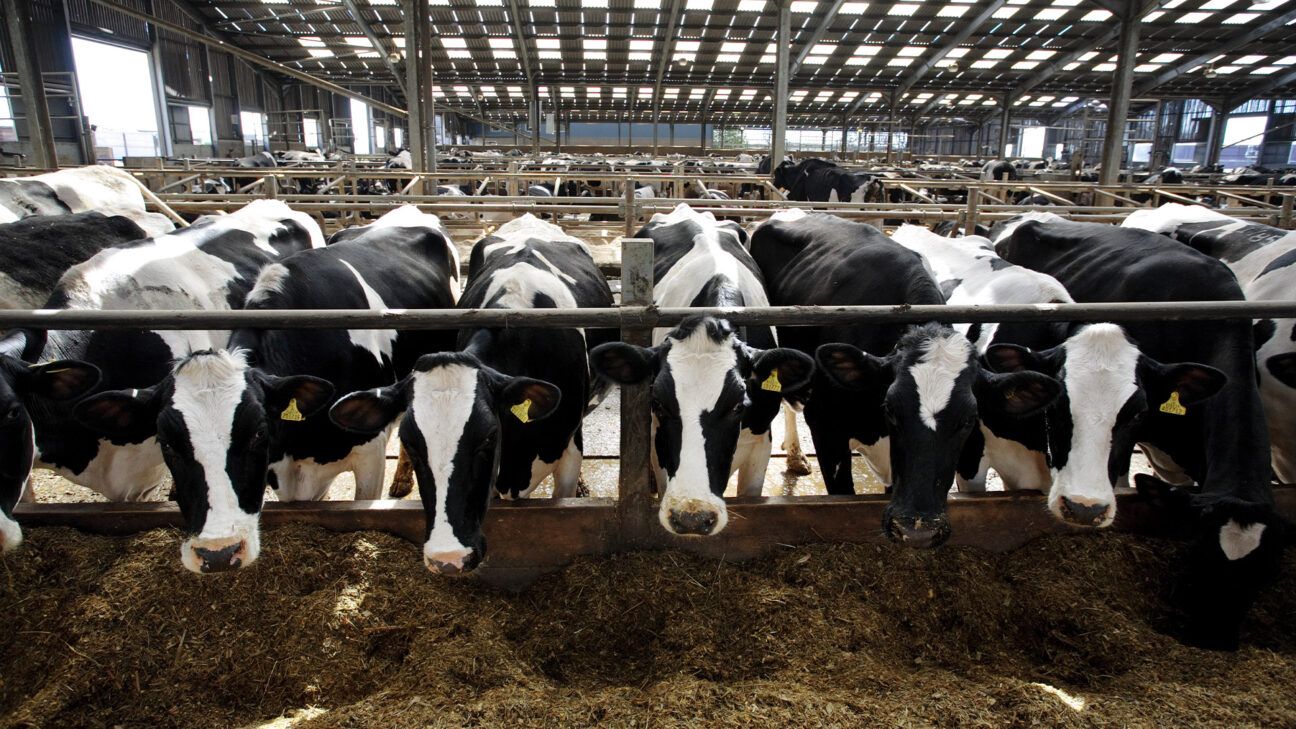
Share on Pinterest
- A novel strain of bird flu has been detected in the milk of certain dairy cow herds across the United States.
- Experts maintain that the nation’s food supply remains secure thanks to stringent inspection protocols for cattle and the pasteurization of most dairy products.
- Nevertheless, some specialists express concerns about the possible transmission of bird flu to humans.
A second variant of the H5N1 bird flu has been identified in dairy cows within the United States.
The United States Department of Agriculture (USDA) has reported that this new strain, designated D1.1, was found in the milk of cows in two counties in Nevada. This marks the first instance of this variant being detected in cattle.
Another strain, B3.13, has previously been linked to infections in 950 herds across 16 states. This strain has predominantly affected chickens and other avian species, contributing to a nationwide egg shortage.
The identification of the D1.1 variant in cattle has intensified concerns regarding the rapid mutation of the bird flu virus.
“It’s adapting and is no longer confined to poultry and wild waterfowl; it’s starting to establish itself among mammals,” stated Beth Thompson, DVM, South Dakota’s state veterinarian, in a conversation with Reuters.
Officials from the government assert that the risk of bird flu spreading to humans remains minimal, although some experts have reservations about this assessment.
Concerns have also been raised about the potential for bird flu to contaminate meat, milk, and egg supplies across the nation.
Health officials
Let’s delve into the spread of the bird flu virus and its possible implications for the safety of our food supply.
The Centers for Disease Control and Prevention (CDC) has
According to CDC officials, the majority of those infected have experienced mild symptoms.
Nonetheless, bird flu can lead to severe illness. The World Health Organization
One such case involved a man from Louisiana who succumbed to the D1.1 variant earlier this year, making him the sole fatality linked to the current bird flu outbreak in the U.S.
In November, a Canadian teenager was hospitalized in critical condition after contracting bird flu but has since made a full recovery.
CDC officials
They
William Schaffner, MD, an infectious disease specialist and professor of medicine at Vanderbilt University in Tennessee, concurs with the CDC’s evaluation.
“The bird flu virus has not yet developed the genetic capacity to easily infect humans or to be transmitted readily between people,” he explained to Healthline.
Schaffner emphasized that, so far, no person-to-person transmission has been documented in the U.S.
However, not all experts share this level of certainty. One expert pointed out the significant transmission rates from birds to cattle and from birds to humans.
“I would contend that the risk of this genotype spilling over from cows to humans is also considerable. We already know it has transferred from birds to humans,” stated Abraar Karan, MD, a post-doctoral researcher in infectious diseases at Stanford University in California, during an interview with Healthline.
Karan’s views are echoed by Seema Lakdawala, PhD, an influenza virologist at Emory University School of Medicine in Atlanta, Georgia. “The risk has escalated, particularly in recent months with reports of more severe infections,” she noted in the journal
Bird flu has been identified in several raw milk products, prompting a voluntary recall in California last November.
However, no traces of bird flu have been found in pasteurized commercial milk products. Experts attribute this to the pasteurization process, which
“Pasteurization has proven to be effective in inactivating the virus,” Karan noted.
“Since pasteurization kills the bird flu virus, all pasteurized dairy products (milk, cream, yogurt, cheese, etc.) are safe for consumption,” Schaffner added. “However, unpasteurized milk and dairy products pose a risk and should be avoided.”
Concerns regarding the safety of beef products have also arisen, although USDA officials assure that the nation’s “rigorous meat inspection process” ensures the safety of the meat supply.
“While we haven’t observed direct transmission through beef, I would advise against consuming raw beef at this time, although no transmission from consumption has been evidenced yet,” Karan stated.
“There’s no established risk linked to beef consumption, but standard safety recommendations apply: wash hands thoroughly, clean cutting boards after use, and cook hamburgers to well done,” Schaffner advised.
Since January 2022, the CDC
These outbreaks have necessitated the culling of more than 145 million chickens, turkeys, and other birds to contain the virus’s spread.
This mass culling has led to a nationwide egg shortage, resulting in soaring prices.
Despite the emergence of a new strain of the H5N1 bird flu affecting dairy cow herds, experts assure us that eggs remain safe for consumption when stored and cooked correctly. The CDC recommends cooking eggs to an internal temperature of 165 degrees Fahrenheit to eliminate any risk of the bird flu virus. It is crucial to ensure thorough cooking before eating.
While government officials have deemed the risk of bird flu transmission to humans low, experts advise maintaining vigilance as the virus continues to evolve. Fortunately, the country’s milk supply is secure due to pasteurization, which effectively eradicates the bird flu virus. Furthermore, government inspection processes protect the nation’s beef supply, although it is wise to ensure meat is cooked thoroughly.
Rest assured, with proper handling and cooking practices, you can continue to enjoy eggs without concern. Stay informed, cook your food properly, and trust the safety measures in place to safeguard our food supply.



